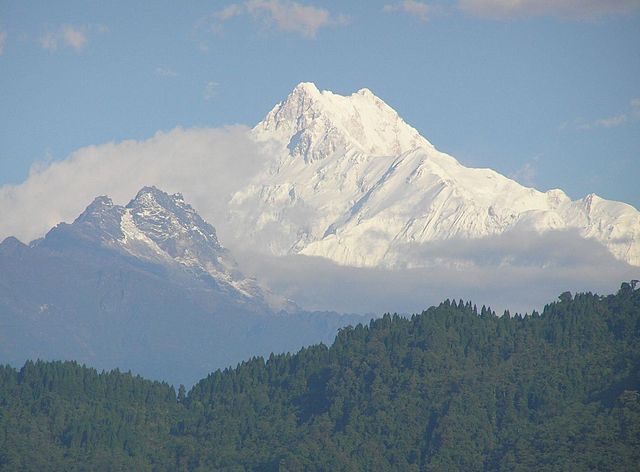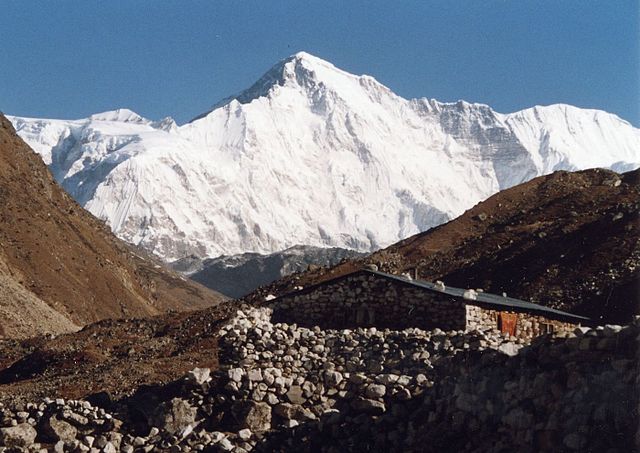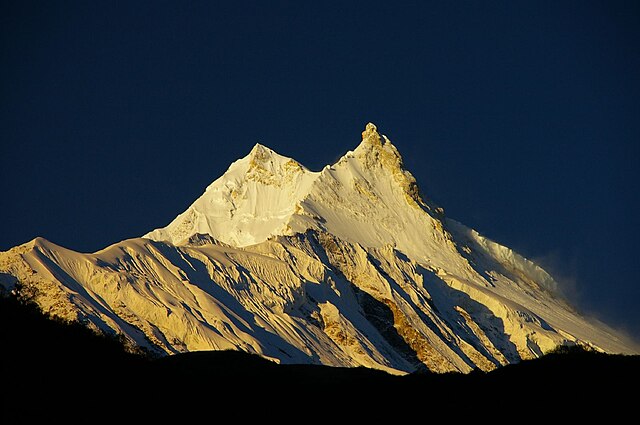Top Qs
Timeline
Chat
Perspective
List of deaths on eight-thousanders
From Wikipedia, the free encyclopedia
Remove ads
The eight-thousanders are the 14 mountains that rise more than 8,000 metres (26,247 ft) above sea level. They are all in the Himalayan and Karakoram mountain ranges. This is a list of mountaineers who have died on these mountains.

By Mountain
Summarize
Perspective
Mount Everest

Mount Everest, Earth's highest mountain at 8,848.86 metres (29,031.7 ft) above sea level, has been host to numerous tragedies. Deaths have occurred on the mountain every year since 1978, excluding 2020, when permits were not issued due to the COVID-19 pandemic. The most notable deadly events on Everest were the 1922 British Mount Everest expedition, 1970 Mount Everest disaster, 1974 French Mount Everest expedition, 1996 Mount Everest disaster, 2014 Mount Everest ice avalanche, 2015 Mount Everest avalanches and 2023 Mount Everest season. As of December 2024, there had been 12,884 successful summits, and 340 people had died either before or after reaching the peak.[1] Since 2019 the Nepali government has initiated periodic "clean-up" campaigns on the mountain, including bodies of climbers.[2]
K2

K2 is the world's second-highest mountain at 8,611 meters (28,251 ft) above sea level. It lies in the Karakoram range, partially in the Gilgit-Baltistan region of Pakistan-administered Kashmir and partially in the China-administered Trans-Karakoram Tract in the Taxkorgan Tajik Autonomous County of Xinjiang. While its summit is at a lower altitude than the summit of Mount Everest, it is considered a much harder mountain to climb due to its steep faces and extreme weather. The most deadly events on K2 were the 1986 K2 disaster, 1995 K2 disaster, and 2008 K2 disaster. As of August 2023, an estimated 800 people had completed a summit, and 96 had died on the mountain.[3]
Kangchenjunga

Kangchenjunga is the third-highest mountain in the world. Its summit sits at 8,586 meters (28,169 ft) in a section of the Himalayas called the Kangchenjunga Himal. Because of its remote location in Nepal and the difficulty of accessing it from India, the Kangchenjunga region is not much explored by trekkers. Despite modern improvements to climbing gear, the fatality rate of summit attempts on Kanchenjunga is high. While there had been 532 successful summits as of May 2022, 52 climbers had lost their lives on the mountain.[1] 10 more climbers had died on Yalung Kang (Kangchenjunga West), one of several satellite peaks in the massif, which features routes to the summit of Kangchenjunga.[1]
Lhotse

Standing at 8,516 meters (27,940 ft) above sea level, Lhotse is the fourth-highest mountain in the world. It is part of the Everest massif, and its standard climbing route follows the same path as Everest's South Col route up to the Yellow Band beyond Camp 3. After the Yellow Band, the routes diverge with climbers bound for Everest taking a left over the Geneva Spur up to the South Col, while Lhotse climbers take a right further up the Lhotse face. As of May 2022, there had been 1,089 successful summits and 22 deaths on Lhotse.[1] A further 10 deaths had occurred on Lhotse Shar, a subsidiary mountain of Lhotse that offers a more difficult climb to Lhotse's peak than the standard route.[1]
Makalu

Makalu is the world's fifth-highest mountain at 8,481 meters (27,825 ft) above sea level. It is located in the Mahalangur Himalayas 19 kilometers (12 mi) southeast of Mount Everest on the China–Nepal border. As of December 2024, there had been 800 successful summits of Makalu and 50 deaths on the mountain.[1]
Cho Oyu

Cho Oyu is the world's sixth-highest mountain at 8,188 meters (26,864 ft) above sea level. Standing on the China Tibet–Nepal Province No. 1 border, the mountain is the westernmost major peak of the Khumbu sub-section of the Mahalangur Himalaya 20 kilometers west of Mount Everest. Its standard northwest ridge route features generally moderate slopes, and it is close to Nangpa La, a glaciated pass that serves as the main trading route between the Tibetans and the Khumbu's Sherpas. For these reasons, Cho Oyu is considered the easiest 8,000-meter peak to climb. As of December 2024, there had been 4,027 successful summits and 52 deaths on the mountain.[1]
Dhaulagiri I

Dhaulagiri I is the world's seventh highest mountain. There had been 691 successful ascents since the first one, by a team led by Kurt Diemberger in 1960. 87 people are known to have lost their lives on the slopes of Dhaulagiri I.[1]
Manaslu

Manaslu is the world's eighth highest mountain. While the peak was known to the local population, foreign visitors became aware of its existence in 1950. During the next five years Japanese expeditions were exploring the area and in 1956 Toshio Imanishi and Gyalzen Norbu successfully climbed the mountain.[187] Due to tensions between climbers and inhabitants, for the next two decades visits to Manaslu were sporadic, lasting until the 1970s. As of December 2024 there is a total of 3,317 successful summits, with 90 people dying on mountain.[1]
Nanga Parbat

Nanga Parbat is the world's ninth highest mountain. It's known for being extremely hard to climb; named the "Killer Mountain" by the 1953 German expedition, first to successfully reach the peak.[210][211] In addition to the large number of climbing deaths, 11 mountaineers were killed in 2013 by Taliban.
Annapurna I
Annapurna I is the world's 10th highest mountain. It is known for being an extremely difficult climb, with 75 deaths on its slopes as of April 2025.[227]
Gasherbrum I

Gasherbrum I, also known as Hidden Peak or K5, is the world's 11th highest mountain.
Broad Peak

Broad Peak is the world's 12th highest mountain.
Gasherbrum II

Gasherbrum II, also known as K4, is the world's 13th highest mountain.
Shishapangma

Shishapangma, also called Gosainthān, is the world's 14th highest mountain.
Remove ads
Deaths per mountain
Remove ads
See also
Bibliography
- Liam Neeson, Lhakpa Dorji, and Dorje Sherpa (1998). Everest (Documentary Film). Nepal, Colorado: Arcturus Motion Pictures, MacGillivray Freeman Films, Polartec.
Notes
References
Wikiwand - on
Seamless Wikipedia browsing. On steroids.
Remove ads


